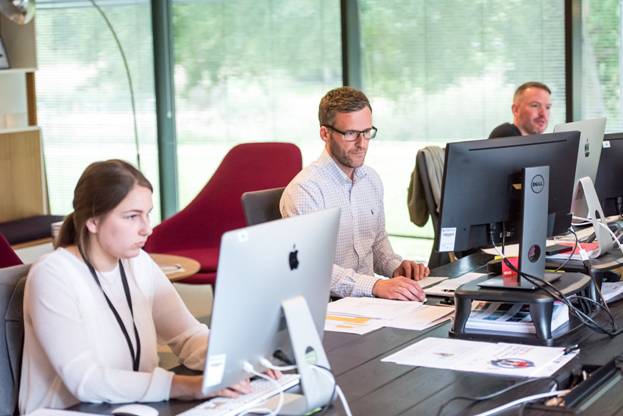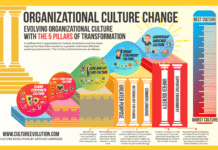
Bringing games to the workplace isn’t just about having fun – it can improve how we learn and grow. This article explains why turning training into games works well and how it benefits both employees and companies.
We’ll examine real examples of success and share practical tips on making games part of workplace learning.
Playing for Better Learning: A New Strategy
Adding playful game elements to corporate training can revolutionize how we learn at work. Turning tedious tasks into engaging challenges motivates employees and helps learning stick. For instance, when Deloitte used games in leadership training, engagement increased by 37%.
This concept is similar to real money slots, which blend the thrill of gaming with the potential for financial rewards, thereby increasing participation and interest. Similarly, for workplace games to work well, they need clear, meaningful goals—like improving skills or meeting company aims.
There must also be room to evaluate and tweak the games. Using game principles makes training more fun and builds a lifelong learning culture.
The Core of Workplace Gamification
Gamification is about bringing gaming fun into places you wouldn’t expect games. It taps into feelings and motivations that make games so addictive, like the fear of missing out (FOMO).
This creates an urge to keep playing, especially in educational settings. Adding stories to gamified lessons gives learners situations to connect with the material better.
Human psychology and design focused on people drive gamification’s use in business. The goal is lasting employee engagement.
The Impact on Employee Training
Making training more game-like can boost how motivated employees are to learn and how much they remember. Gamification techniques like repeating material over time help change habits, leading to better knowledge retention and new behaviors.
The results are impressive: improved memory of what was taught, higher productivity, and an all-around better training experience. Gamification works across many types of training, like improving sales skills, customer service abilities, and understanding rules – positively impacting how people do their jobs.
Creating an Environment of Constant Growth
Gamification enhances individual learning paths. But it also fosters a constructive workplace by:
- Encouraging colleagues to collaborate and share knowledge
- Promoting a cooperative atmosphere at work
- Strengthening team bonds through gamified social interaction
- Nurturing positive competition that energizes workplace dynamics.
Gamification, which incorporates levels, milestones, certifications, badges, and rewards for strong skill assessment performance, supports continuous skill development.
It cultivates an environment dedicated to ongoing progress, keeping employees motivated to enhance and expand their capabilities.
Gamification Essentials: Key Workplace Components

Effective workplace gamification integrates several crucial elements:
- Accumulating points
- Earning badges
- Ranking on leaderboards
- Advancing through levels
Blending traditional techniques into training programs transforms learning into an interactive process. It leverages intrinsic motivation alongside extrinsic rewards.
Customized gamified systems tailor each learner’s educational journey to their needs. This boosts engagement, heightening training effectiveness.
For game elements within a gamified framework to truly enhance training outcomes, defining clear goals and building learning around achievable milestones is vital. This strategy aligns with intended skill development and knowledge transfer objectives.
Interactive Challenges and Progression Systems
Gamification enhances learning experiences by:
- Breaking down complex training into bite-sized chunks
- Including engaging elements like scoring and achievement levels
- Offering customized learning paths for individual progress preferences
- Letting employees advance at their pace via role-specific challenges and tiers
Progress indicators help learners visualize their accomplishments. Early on, this keeps them informed about current achievements and how close they are to goals.
Recognition and Rewards Mechanisms
Rewards and recognition in gamified training boost employee motivation by:
- Strongly increasing engagement levels
- Promptly reinforcing desired actions
- Promoting a competitive environment for improved performance
- Creating a sense of accomplishment
Leaderboards and points systems are common strategies to administer these rewards and acknowledgments.
Incentives like digital badges, certificates, and physical perks enhance memory and improve knowledge retention rates. This approach elevates employee motivation.
Simulations Let Workers Practice Skills
Using simulations with game elements lets workers learn through real-life scenarios. They apply knowledge safely. This hands-on approach improves learning outcomes. Games work well for team exercises and new software training. Decision-making and adaptability, key workplace skills, see big improvement.
Coupling virtual reality with game design creates highly interactive education experiences. Learners gain knowledge by experiencing simulated real-world environments.
Personal Learning Paths Boost Engagement

Tailoring gamified learning to each employee’s unique wants and inclinations is crucial. Since motivations vary, using Bartle’s Taxonomy categorizes player types, enabling customization based on diverse needs.
Personalization and customization in gamified learning raise engagement, retention, and satisfaction with the learning process.
Customizing Has Many Benefits
Offering personalized pathways in gamified learning brings numerous advantages.
- Gamified learning permits folks to progress at their pace
- Challenges match expertise, giving a sense of achievement
- Role-specific gamification improves relevance and participation
- Learners choose paths matching duties and interests
Such perks really boost effectiveness and engagement, merging interactive content smoothly.
Analytics recognizes learner profiles and evaluates their journey. This reveals deeper insights into what participants need and how they progress.
Gamified mobile platforms let users actively apply study topics with instant feedback, fostering an adaptable, tailored training environment.
Adaptive Feedback Loops
Adaptive feedback loops enhance effective learning in a great place to work. Through gamification, learners get immediate reactions to actions, enabling quick corrections in the learning process. This real-time evaluation empowers workers to spot areas for improvement.
Adaptive feedback addresses individual needs via prompt responses. Such insights from gamification tools highlight discrepancies and help learners adapt accordingly, supporting motivation and goal-achievement.
Social Bonding and Collaborative Activities
When work gets turned into games, your team grows closer together. Gamifying stuff at your job promotes camaraderie and sparks some healthy competition among co-workers.
Group challenges and team-based tasks foster collaboration while letting people share knowledge. Gamified activities provide ways to resolve conflicts through open discussions and shared standards.
Social aspects in gamified work platforms – like leaderboards or multi-player modes – motivate employees through friendly rivalry. Yet these also support collective learning opportunities, helping colleagues build resilience together.
Mastering New Skills: Gamification Engages Learners
Turning training into a game makes the process fun and engaging. Gamification taps into people’s intrinsic motivation to keep participating. Learners get hooked by the interactive nature and satisfying progress. This sustains commitment over time as they feel fulfilled by their successes.
Internal Drive and Immersion
Intrinsic motivation means authentic involvement fueled by inner incentives—pleasure, satisfaction, and contentment. Gamifying learning aligns with how our brains naturally crave exploring, overcoming challenges, and earning rewards. This innate drive propels knowledge acquisition.
Using gamification tailored to individual needs helps learners advance comfortably while improving weaknesses. Personalization boosts motivation and participation.
Positive Reinforcement and Achievement
Celebration, like congratulation messages or digital rewards, positively reinforces gamified learning. External incentives like medals and scores recognize accomplishments, subtly boosting the inherent drive to excel.
Marking triumphs, no matter how small, makes learning engaging and memorable, increasing overall enthusiasm.
Game-based positive reinforcement techniques effectively spur sustained advancement.
Overcoming Challenges and Building Resilience
Gamified obstacles help learners develop resilience and a growth mindset, nurturing their sense of identity and purpose as they gain new abilities.
Gamification tactics focus training on specific behaviors or skills. This allows individuals to tackle focused challenges effectively, fostering the ability to bounce back from difficulties.





